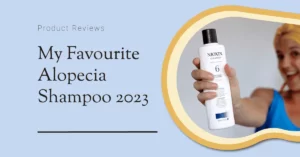
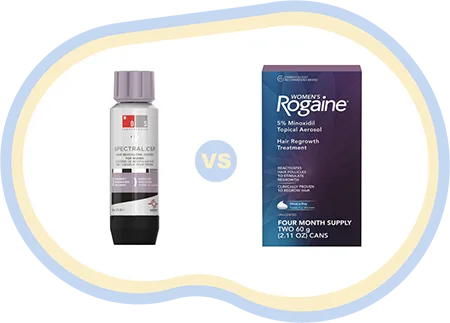
You’ve most likely heard of minoxidil, or Rogaine, as a treatment for hair loss. It’s been around for over 40 years, is typically what your dermatologist will recommend for treating your hair loss and, despite the many negative side effects it can hold, is often held up as the ONLY effective treatment for promoting hair growth.
Nanoxidil is a relative newbie to the hair loss industry: it’s only been around since 2011. And although more clinical studies would be useful, early studies are promising.
Nanoxidil vs Rogaine trials show Nanoxidil to be just as effective, and tolerated more easily, with fewer side effects. Thanks to its structure, it might even be more effective in its absorption than minoxidil!
Despite the fact that it’s a little more expensive, I prefer Nanoxidil vs Minoxidil because it’s more gentle, it has extra scalp nourishing ingredients AND it’s made by the same folks as my top hair thinning shampoo, Revita.
In this post, I’ll dig deeper into those reasons to give you the full story and help you decide between the two hair growth treatments.
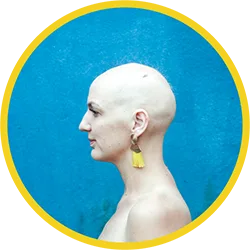
Emma’s ‘not a doctor’ disclaimer
Hi there, I’m an alopecian, I’m not a doctor! Any advice I give is based on my own research and personal experiences. This site is, however, reader-supported. When you buy through external links, I may earn a tiny affiliate commission. Learn more here.
Minoxidil was originally developed as a blood pressure medication in the late ‘80s. However, as unexpected hair growth was one of its side effects (from enlarging blood vessels to handle high blood pressure), it fast changed course. Nowadays, Minoxidil is more commonly known as Rogaine: one of only two FDA-approved hair loss treatments.
Minoxidil can be pretty effective to promote hair growth, especially for men and women suffering from moderate androgenetic alopecia (male pattern baldness) or female pattern hair loss. It’s best for those with smallish bald patches rather than extensive hair loss.
And it promises quick results, too. Rogaine claims a noticeable improvement in density and hair growth (based on the number or new hairs) within 3 months.
So perhaps topical minoxidil works as a ‘quick fix’: to revive hair follicles and promote hair growth in the short-term. I can’t argue that it’s a proven hair growth product. But at what cost?
Having used minoxidil in the past, and gotten pretty severe headaches and dizzy spells without any noticeable hair growth, I’d prefer a more gentle solution to treat hair loss, even if it does take longer.
What you see is what you get: Rogaine and topical minoxidil don’t contain any added ingredients. But minoxidil itself is composed of things like butane, propane, various alcohols and acids.
None of which sound like they’d be very gentle on the scalp. Ouch.
Nanoxidil is Minoxidil 2.0: a hair loss treatment that’s just as effective, potentially even more so, with far fewer side effects. It was introduced by a company called Divine Skin Inc in 2011, whose subsidiary company, DS Laboratories, make my favorite shampoo and conditioner for thinning hair. (See my Revita review for more).
DS Labs are the only providers of Nanoxidil as a topical hair loss ttreatment right now. Their best-known serum, called Spectral DNC-N, contains 5% nanoxidil and was created as a safer, more efficient alternative to minoxidil – so it would be suitable for those with sensitive scalps to stimulate hair growth.
What’s more, Spectral.DNC-N® uses a proprietary Nanosome Delivery System®, which means all those nourishing ingredients can deeply penetrate the scalp and improve absorption. Many popular hair loss treatments only get to the epidermal layer, resting on the scalp before evaporating or being washed off – while Nanoxidil gets right into the hair follicles.
The original spray treatment gets fantastic reviews and is highly recommended by dermatologists as a safer option for those with sensitive skin.
It’s also delivered promising results in clinical trials to evaluate efficacy: such as reduced shedding, increased hair density and a significant improvement in new hair growth. See my full review post to see what else it can do!
DS Labs also make a few other treatments with 5% nanoxidil, which target specific causes of hair loss.
Aside from Nanoxidil complex, this leave-in hair loss treatment contains several hair growth promoters to gently block DHT (the hormone associated with androgenetic alopecia), enlarge hair follicles for improved blood flow to the scalp and reduce inflammation/irritation, which could be triggering hair loss.
The active ingredients in Spectral.DNC-N and their benefits are:
In terms of chemical structure, minoxidil and nanoxidil are almost identical: although with one less carbon atom and two fewer hydrogen atoms, nanoxidil has a slightly smaller molecular structure and lower molecular weight. This, plus its nutrient delivery system, means it can absorb into the skin more effectively than minoxidil.
Nanoxidil is supposed to be better a better hair loss treatment for those dealing with receding hairlines, female pattern hair loss and frontal hair loss. Although I’m not sure what the exact mechanism behind this is – maybe it’s to do with moving out of the telogen phase faster.
Plus, Nanoxidil is more nourishing for your existing hair. While the alcohol in Minoxidil can strip your hair of its oils and leave it feeling dry or brittle, Nanoxidil contains hair-friendly ingredients like caffeine, azelaic acid and other amino acids to boost hair health and improve texture.
The serums from DS Laboratories may be easier to use, as they come with a spray applicator nozzle. One of the complaints about Rogaine is that it can get extremely messy and can even lead to unwanted hair growth in other areas! Yikes.
Early studies show Nanoxidil solution is just as effective as minoxidil but is much more easily tolerated, with fewer side effects compared to minoxidil. The only negative review I could find on Nanoxidil reported potential headaches, while the side effects linked to Minoxidil are pretty extensive.
Those potential side effects would make me run the other direction instead of ever opting to use minoxidil again!
However, Nanoxidil is slightly more expensive. And it may take longer to work for hair regrowth: while Rogaine claims a noticeable improvement in density and new hairs within 3 months, Nanoxidil may take up to 6 months for peak results – although DS Labs say you’ll still see an improvement in hair density between 2 and 3 months.
LA Says: Bear in mind, for these two medications (and in fact, any hair loss treatment), results may vary depending on the person, the type of hair loss and what could be triggering that hair loss. As I always say, don’t expect miracles but do be patient!
For both treatments, you may see an improvement in hair density and volume after 2-3 months. Although for the nanoxidil treatment, hair growth results will likely take longer, up to 6 months.
A one-month supply of Rogaine’s minoxidil treatment costs $29; while the equivalent nanoxidil treatment costs $40. Although you can get it for $32 if you decide to buy more.
In this humble alopecian’s opinion, Nanoxidil seems like the smartest move. It’s the newer version, so it builds on Minoxidil’s clinically proven benefits while surpassing its drawbacks. Yes, it’s slightly more expensive – but it’s still pretty good value, all things considered.
It has limited potential side effects compared to Minoxidil, which has many. And you can use it in conjunction with Revita’s range of great haircare products, to really support your hair health!
Even with my reluctance about trying a chemical-heavy treatment again, I’m very interested in trying Spectral.DNC-N from DS Labs. The next time I stock up on Revita, I may just have to include it in my shopping cart, too!
I hope this post has been useful in introducing you to nanoxidil, if you hadn’t heard about it already, and in showing you how it’s a safer option than minoxidil. If you’ve used either treatment though, I’d love to hear how you got on!
Share your thoughts, comments, experiences in the box below. Looking forward to reading them!
Love & hugs,
Get free, semi-regular alopecia-related news things and musings.
Psst… If no welcome email shows up, check your spam.

Alopecian. Yoga Teacher. Copywriter. Here to share information, offer support and show people the adventures that can lie in hair loss. I’m proud to have alopecia and I want to help others embrace their baldness, too!

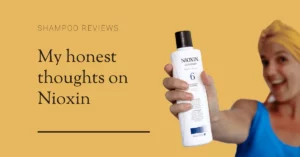
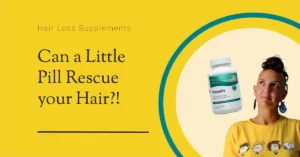
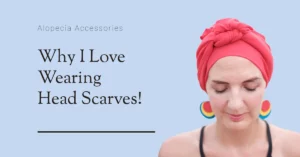

Every month, thousands with hair woes visit my site. The more the merrier! But it takes AGES to write posts and reply to emails. Don’t get me wrong, I love it! But running a website isn’t free. So I’m trying something new: I’m asking for your support. If Lady Alopecia has helped you, please consider buying me a (virtual) coffee or even become a patron of the site. Thanks!
I’m Emma. I’ve had alopecia for 24 years and I’m here to inform/hopefully empower people like me! Read my full story here. But I’m not a doctor, so any advice here is based on my own research and experience. I’m also in a few affiliate programs – see my disclaimer page for more. Or contact me here. Also, why not join a thousand fellow alopecians and get my-semi regular hair about life with irregular hair?
Psst… If no welcome email shows up, check your spam.
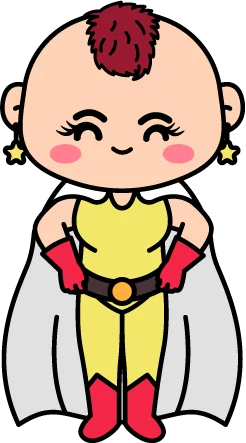
Small print time: Ladyalopecia.com is a participant in the Amazon Services LLC Associates Program, an affiliate program designed to provide a means for sites to earn advertising fees by advertising and linking to Amazon.com.
Copyright © 2023, Lady Alopecia. All rights reserved. Important – By using this website, you promise not to steal stuff. Thank you kindly.
Join the gang and receive semi-regular news and joy from someone with very irregular hair.